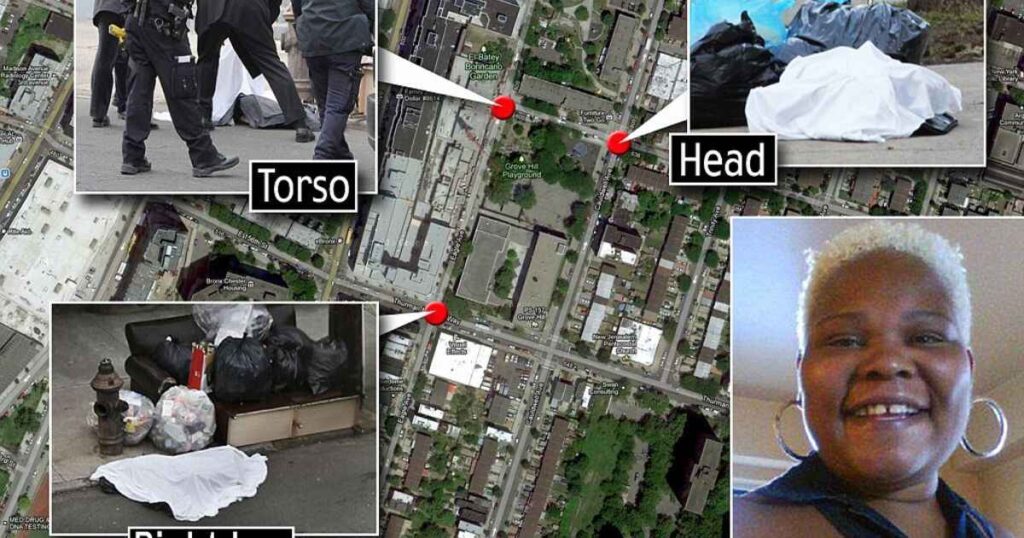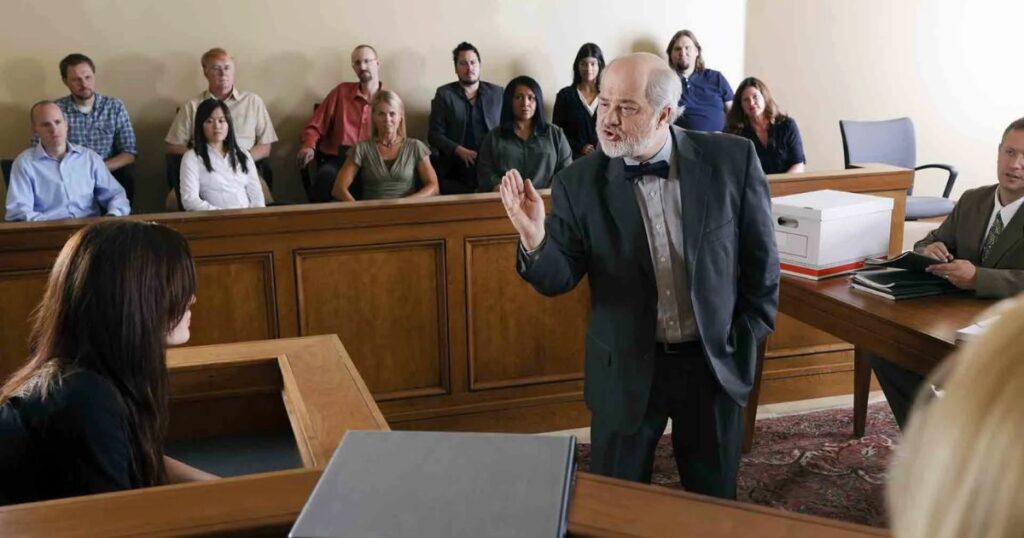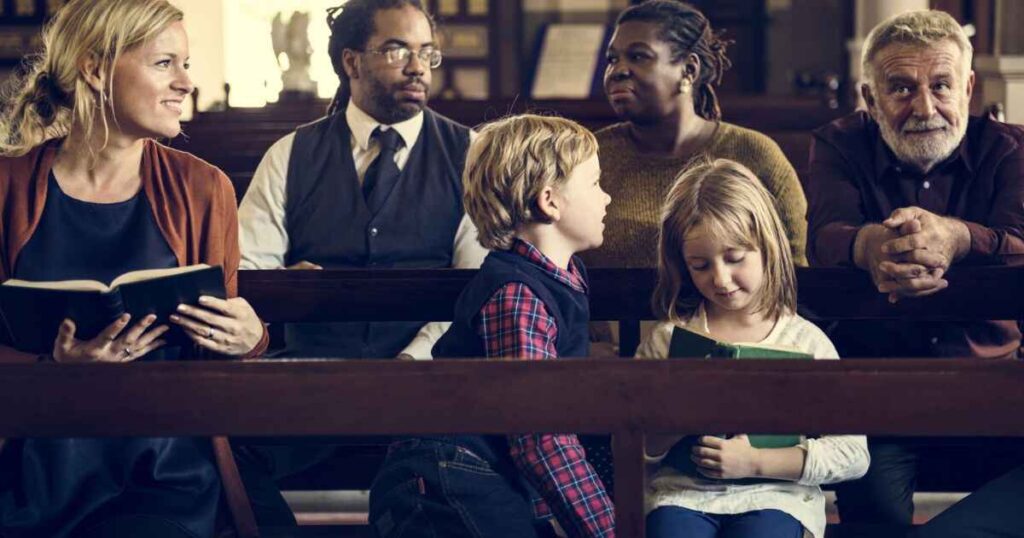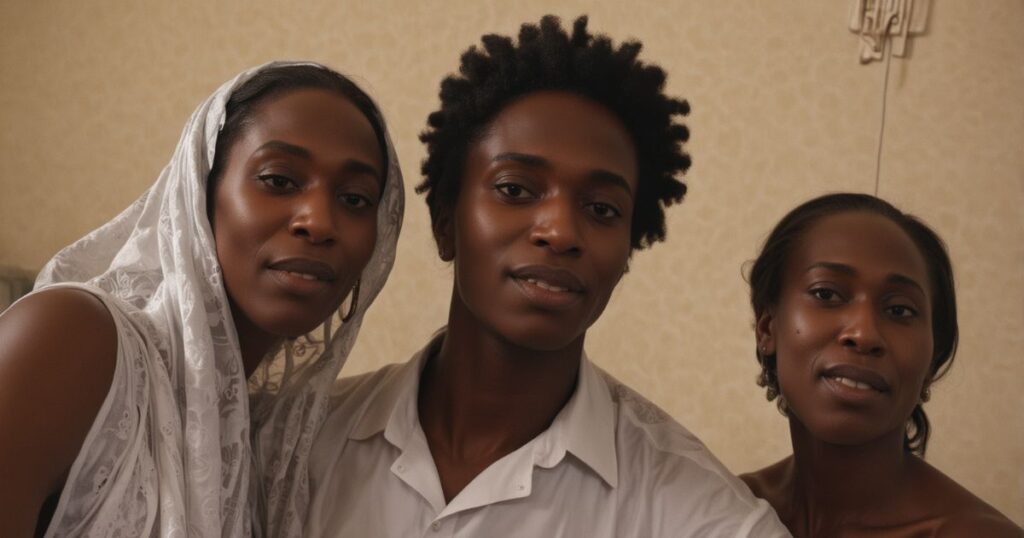In the annals of true crime, few cases have sparked as much horror and intrigue as the tragic tale of Bahsid McLean and the grisly selfie he took with his mother’s lifeless body. This harrowing incident, which unfolded in the Bronx, New York, sent shockwaves through the community and captured the attention of the nation, raising crucial questions about mental health, violence, and the depths of human depravity.
The Grisly Crime of Bahsid McLean Selfie

The Murder of Tanya Byrd
At the center of this chilling narrative was Tanya Byrd, a 55-year-old woman whose life was tragically cut short by the hands of her own son, Bahsid McLean. On a fateful night in early 2024, McLean, then 28 years old, committed an act of unimaginable brutality, taking his mother’s life in their shared Bronx apartment.
The details of the murder are as disturbing as they are heartbreaking. According to court documents, McLean used a kitchen knife to repeatedly stab his mother, inflicting numerous wounds that ultimately proved fatal. The crime scene painted a harrowing picture of violence and anguish, leaving investigators to grapple with the unfathomable nature of the act.
Discovery of the Gruesome Photograph
But the horror did not end with the tragic loss of life. In a twist that sent shockwaves through the public consciousness, Bahsid McLean took a selfie with his mother’s lifeless body, capturing the grim aftermath of his heinous act. The discovery of this chilling photograph by authorities added a haunting dimension to the case, raising questions about McLean’s state of mind and the motivations behind such a macabre act.
How did Bahsid McLean kill his mother?
The specifics of how Bahsid McLean carried out the murder of his mother, Tanya Byrd, are as chilling as they are tragic. According to court documents and witness testimony, McLean used a kitchen knife to repeatedly stab his mother, inflicting numerous wounds that ultimately proved fatal.
The crime scene painted a harrowing picture of violence and anguish, with bloodstains and signs of a struggle scattered throughout the apartment. Forensic evidence suggested that Byrd had attempted to flee her attacker, but was ultimately overpowered by her son’s relentless assault.
In a particularly disturbing detail, investigators found that McLean had taken a selfie with his mother’s lifeless body, capturing the grim aftermath of his heinous act. This chilling photograph, which quickly became known as the “Bahsid McLean selfie,” added a haunting dimension to the case, raising questions about McLean’s state of mind and the motivations behind such a macabre act.
Unraveling the Motives
The Troubled Relationship
As investigators delved deeper into the case, a complex portrait of Bahsid McLean and his relationship with his mother began to emerge. According to friends and family members, the two had a tumultuous and often strained dynamic, with McLean exhibiting signs of emotional instability and resentment towards his mother.
Witnesses described instances of verbal abuse and heated arguments between the two, hinting at underlying tensions that may have contributed to the tragic outcome. Some speculated that McLean harbored deep-seated feelings of abandonment or neglect, stemming from his upbringing and his mother’s perceived failures as a parent.
Psychological Profile of Bahsid McLean
As the investigation progressed, mental health experts were brought in to shed light on Bahsid McLean’s psychological state and potential disorders. Through extensive evaluations and analyses, a disturbing portrait began to take shape, revealing a young man grappling with a range of mental health issues, including:
- Antisocial Personality Disorder: Characterized by a lack of empathy, disregard for societal norms, and a propensity for manipulative and deceitful behavior.
- Narcissistic Personality Disorder: Marked by an inflated sense of self-importance, a lack of empathy for others, and a pervasive need for admiration and attention.
- Schizophrenia: A severe mental disorder characterized by delusions, hallucinations, and disorganized thoughts and behaviors.
These diagnoses, while not excusing McLean’s actions, provided a glimpse into the troubled psyche of a young man who may have been struggling with profound mental health challenges.
Read This Blog: Bruce Wilpon Wife Judy Kessler: A Journey Of Success, Love, And Philanthropic Impact
The Role of Mental Illness
The Bahsid McLean case highlighted the complex interplay between mental illness and violent crime, sparking important conversations about the need for improved access to mental health resources and early intervention strategies.
Mental health advocates and experts weighed in, emphasizing the importance of destigmatizing mental illness and promoting greater understanding and support for those grappling with psychological disorders. They argued that cases like McLean’s underscore the critical need for robust mental health services, as well as increased education and awareness around the warning signs of potential violence.
At the same time, the case also raised difficult ethical questions about the line between mental illness and criminal culpability, challenging society to grapple with the complexities of the human mind and the limits of legal and moral responsibility.
The Legal Proceedings
The Trial and Evidence Presented

As the investigation into Bahsid McLean’s heinous crime progressed, the legal system geared up for what promised to be a high-profile and emotionally charged trial. Prosecutors assembled a formidable case against McLean, marshaling a wealth of physical evidence, forensic analysis, and witness testimony.
Central to their argument was the damning selfie that McLean had taken with his mother’s corpse, a chilling piece of evidence that seemed to capture the depths of his depravity. Prosecutors argued that this act demonstrated a clear lack of remorse and a callous disregard for human life, painting McLean as a cold-blooded killer who deserved the harshest punishment under the law.
Defense Strategies and Mental Health Claims
In response, Bahsid McLean’s defense team mounted a vigorous campaign, seeking to mitigate the severity of his actions by highlighting his long-standing mental health struggles. They argued that McLean was not fully in control of his faculties at the time of the crime, citing his diagnoses of antisocial personality disorder, narcissistic personality disorder, and schizophrenia as contributing factors.
The defense team also sought to cast doubt on the prosecution’s portrayal of McLean as a calculating and remorseless killer, instead painting him as a deeply troubled individual whose actions were the product of a fractured psyche and a lifetime of emotional turmoil.
The Verdict and Sentencing
After weeks of intense deliberation and testimony, the jury in the Bahsid McLean trial reached a verdict: guilty of first-degree murder. The decision was met with a mix of relief and solemnity, as the community grappled with the weight of the crime and the finality of the legal process.
Despite the defense’s efforts to highlight McLean’s mental health struggles, the jury ultimately determined that he was fully culpable for his actions and deserving of the harshest punishment. McLean was sentenced to life in prison without the possibility of parole, a decision that many saw as a just, if sobering, outcome for such a heinous act.
Media and Public Reaction
The Shocking Nature of the Crime
From the moment news of Bahsid McLean’s crime broke, the public reaction was one of shock, horror, and disbelief. The details of the case were so gruesome, so antithetical to basic human decency, that they seemed almost unfathomable.
The revelation that McLean had taken a selfie with his mother’s lifeless body was particularly jarring, sparking outrage and revulsion from those who viewed it as a callous and depraved act. The image itself became a source of intense controversy, with debates raging over the ethics of sharing such graphic content and the potential for it to traumatize or desensitize viewers.
Media Coverage and Sensationalism
The “Bahsid McLean selfie” itself became a focal point of media attention, with outlets debating whether to publish the image or blur it out of respect for the victim and her family. Some argued that showing the selfie in its unvarnished form was necessary to convey the full horror of the crime, while others contended that it amounted to little more than sensationalism and a violation of human dignity.
Amidst the frenzy of coverage, questions arose about the role of the media in such high-profile cases, with critics accusing some outlets of prioritizing ratings and clicks over responsible reporting. Debates raged over the fine line between informing the public and exploiting tragedy for commercial gain, prompting calls for greater ethical standards in the coverage of violent crimes.
Impact on the Community and Victim’s Family

Beyond the media maelstrom, the impact of Bahsid McLean’s crime reverberated deeply within the local community and among those closest to the victim, Tanya Byrd. Friends and neighbors spoke of their shock and sorrow, recalling Byrd as a kind-hearted and loving woman who did not deserve such a tragic end.
For Byrd’s family, the pain and trauma were immeasurable. Loved ones grappled with the loss of a cherished mother, daughter, and sister, compounded by the horrific nature of her death at the hands of her own son. The profound betrayal of trust and the violation of the sacred bond between parent and child left an indelible mark on those closest to the tragedy.
In the aftermath, the community rallied around Byrd’s family, offering support, condolences, and a collective shoulder to lean on during their darkest hours. Vigils and memorials were held, providing a space for healing and remembrance, as the community sought to reclaim a sense of normalcy in the wake of such a harrowing event.
Aftermath and Reflections on the Case
Incarceration and Appeals
With Bahsid McLean’s conviction and sentencing, the legal chapter of this tragic saga came to a close – but the ripples of his actions continued to spread. McLean was transferred to a maximum-security prison, where he would spend the rest of his life behind bars, cut off from the world he had so violently disrupted.
In the years that followed, McLean’s legal team explored avenues for appeal, citing potential missteps in the trial or new evidence that might cast doubt on his conviction. However, these efforts ultimately proved fruitless, as the weight of the evidence and the severity of the crime made it nearly impossible to overturn the jury’s decision.
Lessons Learned and Preventative Measures
As the dust settled on the Bahsid McLean case, it became a rallying cry for those advocating for improved mental health services and early intervention strategies. The tragedy served as a stark reminder of the dire consequences that can result when mental illness goes unaddressed and untreated.
In the wake of the case, community leaders, mental health professionals, and policymakers joined forces to implement a range of preventative measures aimed at identifying and supporting individuals struggling with psychological disorders. These efforts included:
- Increased funding for mental health clinics and counseling services, particularly in underserved communities.
- Public awareness campaigns to destigmatize mental illness and encourage those in need to seek help.
- Enhanced training for law enforcement and first responders in recognizing the signs of mental health crises and deescalating volatile situations.
- Improved coordination between mental health professionals, social workers, and law enforcement to identify and support at-risk individuals before they reach a breaking point.
While no single solution could guarantee the prevention of such tragedies, these initiatives represented a concerted effort to address the underlying issues that had contributed to the Bahsid McLean case, with the hope of averting similar acts of violence in the future.
Remembering Tanya Byrd
Amidst the analysis, reflection, and calls for change, one essential aspect remained constant: the need to honor and remember the life of Tanya Byrd, the innocent victim whose life was so senselessly cut short.
Friends, family, and community members came together to celebrate Byrd’s memory, sharing stories and anecdotes that painted a picture of a vibrant, loving woman who had touched countless lives. Her kindness, her resilience, and her unwavering devotion to her loved ones were recounted time and again, serving as a poignant reminder of the profound loss inflicted by her son’s actions.
In the years that followed, Byrd’s name became a rallying cry for victim advocacy groups and organizations dedicated to supporting families affected by violent crime. Her legacy lived on through scholarships, charitable initiatives, and community programs aimed at empowering and uplifting those who had endured similar tragedies.
While the pain of her loss would never fully subside, the remembrance of Tanya Byrd served as a powerful testament to the enduring strength of the human spirit and the importance of cherishing the precious gift of life – a flickering light in the darkness of one of the most chilling crimes in recent memory.
Also Read More: Ice Spice: Graduating From Yonkers To Hip-Hop Stardom
Conclusion
The harrowing tale of Bahsid McLean and the “selfie” he took with his mother’s corpse stands as a sobering reminder of the depths of human depravity and the devastating consequences of untreated mental illness. This case, which captured the nation’s attention with its shocking details and haunting imagery, has left an indelible mark on the collective consciousness, prompting difficult but necessary conversations about violence, accountability, and the complexities of the human psyche.
As we reflect on this tragedy, we are forced to confront uncomfortable truths about the fragility of the human condition and the urgent need for improved access to mental health resources. The Bahsid McLean case serves as a clarion call for action, challenging us to destigmatize mental illness, invest in preventative measures, and cultivate a society that prioritizes compassion and early intervention over punishment and neglect.
At the same time, we must also honor the memory of the victim, Tanya Byrd, whose life was cut short in such a horrific manner. Her legacy reminds us of the preciousness of human life and the importance of cherishing our loved ones, for we never know when tragedy may strike.
As we grapple with the aftermath of this chilling tale, let us resolve to learn from its painful lessons and work towards a future where such senseless acts of violence become increasingly rare, and where those struggling with mental health challenges can find the support and understanding they so desperately need.
FREQUENTLY ASKED QUESTIONS
Who Was Bahsid McLean?
Bahsid McLean was an individual involved in a highly publicized crime case in 2024, where he was convicted of murdering his mother, Tanya Byrd.
What Was The Nature Of The Crime?
The crime involved the gruesome murder of Tanya Byrd, followed by the disturbing act of taking a selfie with her corpse.
How Was Bahsid McLean Caught?
Bahsid McLean was apprehended after the discovery of a photograph depicting the crime scene, which ultimately led to his arrest and confession.
What Were The Motives Behind The Murder?
The motives behind the murder were complex, involving a troubled relationship between Bahsid McLean and his mother, as well as potential psychological factors.
What Was The Outcome Of The Legal Proceedings?
The legal proceedings resulted in a trial where evidence was presented, defense strategies were employed, and ultimately, Bahsid McLean was convicted and sentenced.
How Did The Public React To The Crime?
The public reaction to the crime was one of shock and horror, as the nature of the crime and its sensational media coverage deeply impacted the community and the victim’s family.
What happened in the Bahsid McLean case?
The Bahsid McLean case involved the murder of his mother, Tanya Byrd, followed by his arrest, trial, and eventual conviction.
What was Bahsid McLean’s motive for killing his mother?
The motive for Bahsid McLean’s actions stemmed from a combination of personal and psychological factors, including a troubled relationship with his mother.
Where is Bahsid McLean now?
Bahsid McLean is currently serving his sentence in incarceration, reflecting on the consequences of his actions.
What are the psychological factors behind such crimes?
Psychological factors behind crimes like this can vary widely, including issues such as mental illness, emotional instability, and complex interpersonal dynamics.







